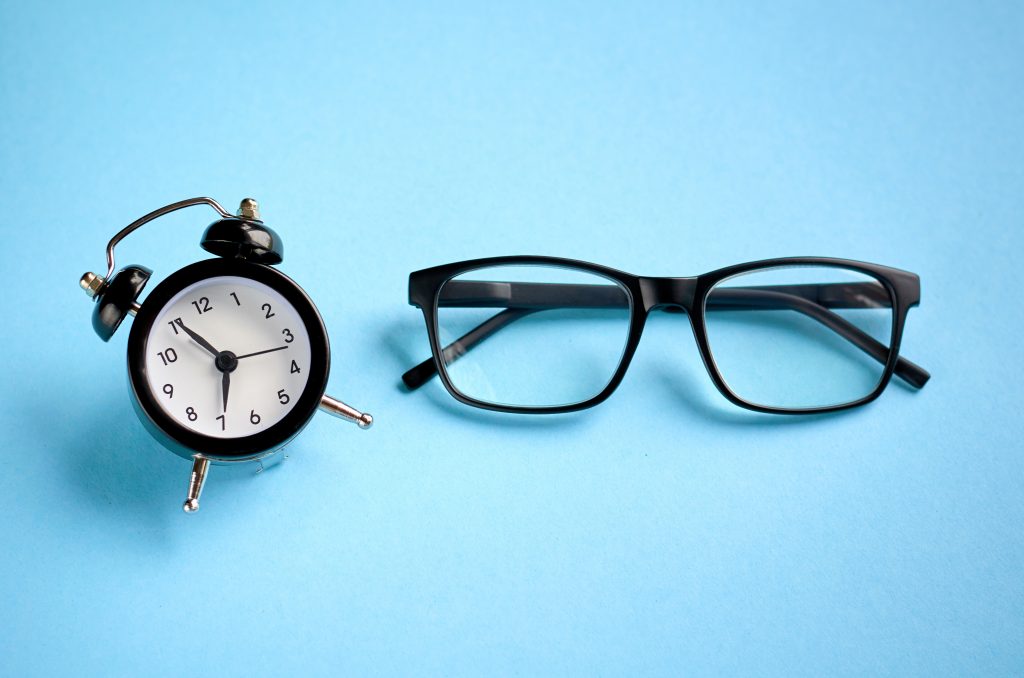How Long Does an Eye Exam Take?

Most eye exams last between 30 and 60 minutes, depending on which exam the eye doctor performs. During this time, the optometrist will assess your eyes and diagnose any conditions or recommend some form of sight correction.
If you have never had an eye exam, your first visit may last from 30 minutes to several hours, depending on the equipment used and what your doctor checks. During your first visit, you will go through an initial Q&A session, as well as a series of eye exams.
How Often Should I Have an Eye Exam?
On average, you should follow the recommended eye exam schedule below.
| Age | Frequency |
|---|---|
| Six to 12 months | First eye examination |
| Three to five years | Second eye examination |
| Six to 20 | Every three to four years |
| 21 to 60 | Every one to two years |
| 61 and up | Annually |
You'll want to have your eyes checked more often if you wear glasses or contact lenses, have a family history of eye disease, or have a chronic condition that puts you at risk for eye disease, such as diabetes.
What Can I Expect During My Eye Exam?
A medical eye exam occurs when a doctor examines the symptoms you are experiencing that affect your vision or comfort. For instance, if you have chronic eye pain or you constantly see flashes of light, the doctor will investigate the causes of your symptoms.
The doctor performs three primary assessments during a routine eye exam:
- Vision check
- Medical condition screening
- Glasses/contact lens prescription renewal
A routine eye exam may result in a diagnosis of nearsightedness, farsightedness or astigmatism. Vision insurance plans provide coverage for routine exams, glasses and contact lenses. They may also provide discounts for doctor's fees. The doctor bills your insurer for the eye exam. By law, Medicare does not pay for routine vision exams.
Will I Have to Get My Eyes Dilated?
Dilation is part of a thorough eye exam. It gives your doctor a good look inside your eye. It's especially important if you're having eye pain or vision problems or if you're more likely to get specific eye diseases.
Normally, your pupil gets smaller when light shines into it. In dilation, your doctor uses special eye drops to force the pupil to stay open. It allows the doctor to see much more of the back of your eye, including the entire retina, macula and optic nerve.
During a dilated exam, your doctor can spot problems like a torn or detached retina or an eye tumor. They can also diagnose and monitor common eye diseases that can take away your sight:
- Diabetic retinopathy: Blood vessels that leak, swell, or grow abnormally in the retina.
- Glaucoma: Damage to the optic nerve.
- Age-related macular degeneration: Protein or pigment buildup and unusual growth of blood vessels are symptoms of a breakdown of the macula.
- Cataract: A clouding of your natural lens.
What Happens if I Need Glasses or Contact Lenses?
See an eye doctor. The best way to know for sure if you need glasses is to find an eye doctor near you and schedule a comprehensive eye exam. Seeing an eye doctor is especially important if you're experiencing any of the vision problems described above. Symptoms of needing glasses can vary based on the kind of eye issue you're having. Some common symptoms include:
- Blurred vision
- Double vision
- Fuzziness, as in objects don't have defined, clear lines and things seem a bit hazy
- Headaches
- Squinting
- Objects have "auras" or "halos" around them in bright light
- Eyes that feel tired or irritated
- Distorted vision
- Trouble seeing and driving at night
Your doctor will recommend either glasses or contact lenses based on your eye exam. From there, they will go over your options with you. Finally, you will get fitted with the right pair of glasses or contact lenses that optimize your vision.
Schedule an Eye Exam Today
Contact Gulf Coast Vision Center today at one of our Pace, Milton, Crestview or at our Pensacola locations on Nine Mile and in East Hill to schedule a comprehensive eye exam.
